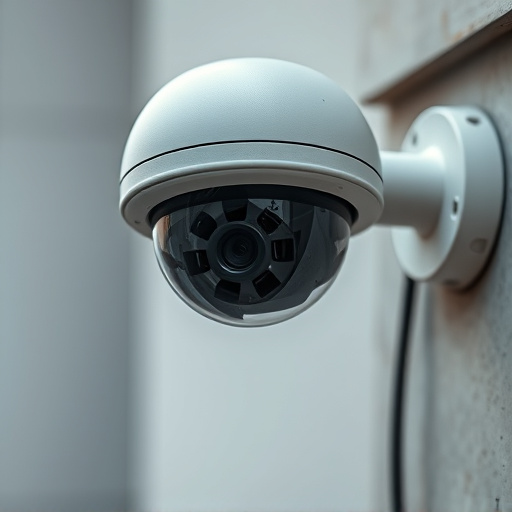Battery-powered fake camera setups, or decoys, offer a simple, cost-effective security solution for homes and businesses. While lacking internal components, these devices mimic real cameras with weatherproof casings and LED lights, acting as powerful deterrents against burglars and vandals. Strategically placing them in high-visibility areas provides enhanced safety without complex wiring or professional installation, making them ideal for temporary or supplemental security needs. Regular maintenance ensures their effectiveness as a reliable deterrent.
“Uncover the power of deception with battery-powered fake security camera setups—a strategic tool for enhancing home and business safety. This comprehensive guide explores the ins and outs of these innovative deterrents, from understanding their unique components to harnessing their benefits. We’ll break down the essential elements of an empty housing unit, offering insights on assembly and optimal placement. Discover how these realistic decoys can disrupt would-be criminals, providing a cost-effective, hassle-free security solution.”
- Understanding Battery-Powered Fake Camera Setups
- Components of an Empty Security Camera Housing Unit
- Benefits and Use Cases for Using Fake Cameras
- Assembly and Placement Tips for Effective Deterrent
Understanding Battery-Powered Fake Camera Setups
Battery-powered fake camera setups have become increasingly popular as a deterrent for burglars and vandals, providing a sense of security without the need for complex wiring. These devices operate independently, drawing power from rechargeable batteries, allowing them to be strategically placed in various locations, even in remote or hard-to-reach areas. The convenience of this option is appealing to homeowners and business owners alike, as it offers a quick and easy solution to surveillance needs.
However, it’s essential to recognize that while these setups may look realistic, they often lack the advanced features of traditional security cameras. Functionality varies among models, with some featuring motion detection and LED lights for enhanced deterrence. Understanding the capabilities and limitations of battery-powered fake cameras is crucial when considering them as a security measure.
Components of an Empty Security Camera Housing Unit
An empty security camera housing unit, also known as a decoy or dummy camera, is designed to mimic the appearance of an active surveillance device while lacking internal components crucial for actual monitoring. These units typically consist of a durable casing that resembles a real camera housing, complete with mounting brackets and weatherproofing features. The primary component missing is the camera itself—instead, it’s equipped with a battery-powered fake camera setup, which can include LEDs to mimic the glow of an operational lens.
These dummy cameras serve as an effective deterrent for potential intruders, as they suggest the presence of active surveillance without revealing the exact locations of real security cameras nearby. The battery-powered feature ensures consistent visibility and operation, even in remote or hard-to-reach areas where wiring might be impractical. This makes them versatile options for businesses, residential properties, and public spaces seeking enhanced security without the complexities and costs associated with comprehensive CCTV systems.
Benefits and Use Cases for Using Fake Cameras
Using fake security cameras, especially those that are battery-powered and easy to set up, offers a range of benefits for both residential and commercial properties. One of the primary advantages is their role in deterring potential intruders. The mere presence of these realistic camera setups can significantly reduce crime rates as criminals often look for easy targets. By strategically placing fake cameras, property owners can create an illusion of enhanced security, making their locations less appealing for unlawful activities.
Moreover, battery-powered fake camera setups provide flexibility and convenience. They don’t require extensive wiring or professional installation, allowing users to quickly deploy them in various places without much hassle. These cameras are ideal for temporary security measures during special events, construction sites, or vacant buildings. Additionally, they can be used as part of a larger surveillance system, offering an affordable alternative to real cameras while still contributing to overall safety and peace of mind.
Assembly and Placement Tips for Effective Deterrent
Setting up a battery-powered fake camera setup can significantly enhance security measures, but optimal placement and assembly are key to ensuring its effectiveness as a deterrent. The first step is to choose a location that offers a clear line of sight across the area you wish to protect. These hidden cameras are most effective when strategically placed in plain sight, deterring potential intruders without drawing unnecessary attention. Consider high-traffic areas or locations with valuable assets, such as entry points, offices, or storage rooms.
When assembling and installing your battery-powered fake camera, ensure the housing is securely fastened to a stable surface. Mounting it on walls, fences, or overhead structures can provide stability and prevent tampering. Additionally, positioning the camera at eye level or slightly elevated angles increases its deterrence factor as it mimics real surveillance equipment. Regular maintenance, including checking battery life and ensuring clear camera lenses, is also crucial for keeping your fake security setup effective and reliable.
Battery-powered fake camera setups offer a cost-effective and flexible security solution. By utilizing empty housing units, these fake cameras can effectively deter criminals without breaking the bank. Understanding their components, benefits, and proper assembly is key to maximizing their deterrent effect. With strategic placement, these unassuming devices can significantly enhance home or business security, providing peace of mind in today’s digital age.
